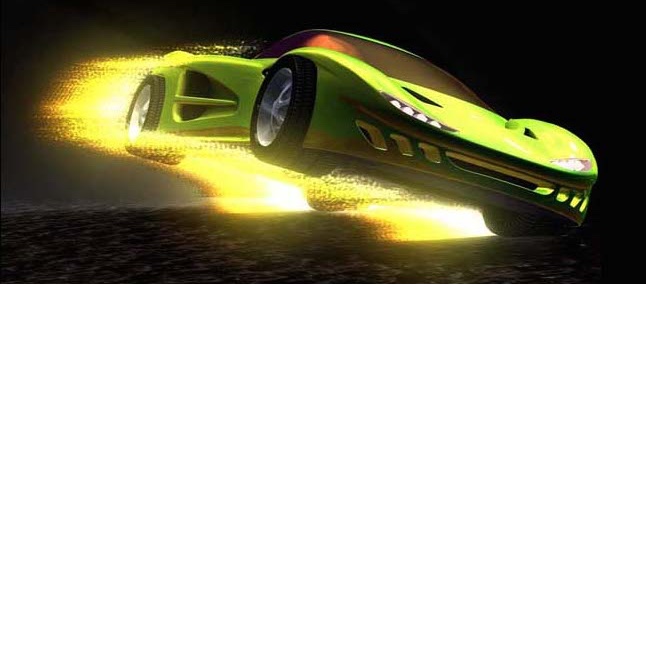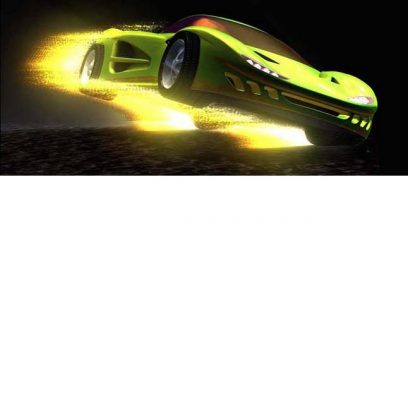MUSIC & SOUND DESIGN
Atari Games was convinced that my skills as an acclaimed acapella singer and arranger would transfer to the world of video game audio. They weren’t wrong… But my 1st 6 months working there I struggled to learn the ins and outs of their proprietary music coding environment, and the fascinating demands of music and audio for arcade video games. Video arcades are loud, games need to be un-subtle in the extreme to grab attention. Booming explosions on subwoofers, instantly recognizable pings and wooshes of sound that one could recognize from across the room, and pumping, exciting music that energizes the gameplayer and makes them part with all their quarters.
I left Atari after 3 years, wanting to explore my own music making again. But opportunities to do more video games keep coming up. These days they’re PC or console. Arcade games needed music to last a mere 1-2 minutes – the time it took to go through a couple of quarters. Todays projects have gameplay that can go on for 45 minutes or more. Constructing dynamic music that can ebb and flow and not become irritating or boring is a whole new kind of challenge, and I love it. And, rather than simple bleeps and bloops, today’s games call for sweeping cinematic soundscapes, allowing me to explore a wide range of moods and styles.
While at Atari I worked on lots of different games – fighters, shooters and drivers. Not all of them made it to market, but some of them (San Francisco Rush, California Speed and Road Burners) became big hits. They helped finance my first solo CD releases.
By 1998, arcade games were shipping with hard drives on them, and music could be streamed at CD quality (16 bit, 44.1 khz). Before then, all audio had to fit on a microchip – sound effects and music, all of it. This meant that sounds had to be as small as possible, which usually meant 8bit, 11khz. Which meant that audio had very little high end to it, and sounded gritty and crunchy. The standard way of writing music was to upload sounds (a snare drum, a flute) and then write code that mimicked sheet music or a piano roll – the code would play those sounds and Voila!, music. Albeit a kind of stilted and, to my ears, limited music.
When I set to work on San Francisco Rush, I didn’t want that standard bleepy-bloopy music – I wanted more. So I figured out that if I tossed out the standard model of a written score using bloopy sound samples, I could still fit a bunch of short 1 and 2 bar loops of audio – real drums, real guitars, real vocals – and piece those together like building blocks into songs. Since the songs only had to be in the background at a noisy arcade, and only had to last 2 minutes or so (and the player could change the song via a radio button), it worked nicely. The background music had a more organic feel than all the other games out there. The only caveat came 2 years later, when the game was adapted for Nintendo 64. When played at home on the TV, the game could go on for 15 minutes or more (no quarters required…) and my little 2 minute songs would repeat ad nauseum, causing many players to turn off the music entirely. Live and learn…
The team had decided that San Francisco Rush should have 3d audio. That meant 5 speakers, 2 in the headrest, 2 in the cabinet, and a subwoofer under the butt for ass-kicking sound. The subwoofer meant that the energy in the music was literally felt in the body. For sound effects, it was beyond beyond. I created a road-noise sound (the sound of the tires rolling on the road and reverberating through the car body and interior), so there was a constant rumbling when racing on the streets. But when the car became airborne, that sound cut out, and the sensation of flying through that air was visceral. And when you landed, a satisfying “THUMP!” shot up through your backside.
When it came to purchasing speakers, the $5 subwoofer was fine. For the 4 tweeters, we could spend $2 each, or $4, or $7. You could really hear the difference, even at 11khz. But to bring the game in at a reasonable cost, we had to settle on reasonably priced speakers. Cabinet design? SF Rush was a rather large and expensive cabinet. California Speed was designed with a much smaller cabinet (and lesser sound), but you could fit twice as many of those into a shipping container, lowering the cost radically. The suits upstairs like that kind of thinking 🙂
When it came to purchasing speakers, the $5 subwoofer was fine. For the 4 tweeters, we could spend $2 each, or $4, or $7. You could really hear the difference, even at 11khz. But to bring the game in at a reasonable cost, we had to settle on reasonably priced speakers. Cabinet design? SF Rush was a rather large and expensive cabinet. California Speed was designed with a much smaller cabinet (and lesser sound), but you could fit twice as many of those into a shipping container, lowering the cost radically. The suits upstairs like that kind of thinking 🙂
The driving simulation software for SF Rush was adapted from a police driving training unit that Atari had painstakingly developed. When driving a police cruiser at 25-65 mph it worked wonderfully. But increase the speed to 225 and the car became near impossible to control. The programmers eased the sensitivity off until it was possible to drive at racecourse speeds. But when I handed off the audio for doppler effect samples (passing by cheering crowds, racetrack announcers), the programmer said it sounded funny. I double-checked my samples and they were fine, but he was right, it sounded strange. The answer? Aside from being in a jet or a bullet train, none of us ever travel at 225 mph. And inside of those trains and planes you cannot hear outside noises. You never would, because the sound of the wind would block them out. What we were hearing is what doppler, if you could hear it, would sound like at 225 mph. The programmer cut the doppler speed by 66%, and then the familiar sound of doppler (the downward change in pitch as you drive by a sound at 75 mph) revealed itself.
BEACHED BOYS: My favorite attempt at the Theme Music for California Speed. The producer nixed it 🙁
HEAVY COP: The producer for California Speed nixed a lot of my music. He even went and hired some other guy. But he chose this one as the eventual Attract Music. I win!
WHATSYERNAME: “High Score Name Entry” music for SF Rush. This uses the looped samples method I cooked up, you can hear how some vocals are repeated but pitched up or down, and how the band is made up of 4 different loops (and a short coda) pieced together.
AWWYEAHH: Streaming audio, from either California Speed or Road Burners.
KNOB: Streaming audio, from either California Speed or Road Burners.
ROSEBUD: This one from California Speed (not in final game)
TEXAS BLUE: One of my favorites from California Speed.
CONTINUE: The “continue” screen is where you seduce the player into dropping more quarters to continue his game, rather than starting over. From SF Rush, using 2 looped samples for band, one special effect sound overlapped, and one voice sample “Continue” pitched up and down all over.
HEAVY COP: The producer for California Speed nixed a lot of my music. He even went and hired some other guy. But he chose this one as the eventual Attract Music. I win!
WHATSYERNAME: “High Score Name Entry” music for SF Rush. This uses the looped samples method I cooked up, you can hear how some vocals are repeated but pitched up or down, and how the band is made up of 4 different loops (and a short coda) pieced together.
AWWYEAHH: Streaming audio, from either California Speed or Road Burners.
KNOB: Streaming audio, from either California Speed or Road Burners.
ROSEBUD: This one from California Speed (not in final game)
TEXAS BLUE: One of my favorites from California Speed.
CONTINUE: The “continue” screen is where you seduce the player into dropping more quarters to continue his game, rather than starting over. From SF Rush, using 2 looped samples for band, one special effect sound overlapped, and one voice sample “Continue” pitched up and down all over.
UNDEAD OVERLORD
Here’s a game you can go play right now – it’s on Steam Early Access. It started some years back, by me and a few Atari pals along with some fresher, younger blood and brains. The original concept was to be able to choose to play either the humans or the zombies, but it became apparent that it was really more fun to play as a zombie (we’re already human, right?). We took advantage of the Steam model where you release a game as you work on it, constantly updating it with new features and missions. For me, it’s been a blast – The music is sometimes zombie punk (one chord with a lot of attitude), sometimes horror-movie cinematic, sometimes spooky aleotoric mumbo jumbo. While it is indeed still available to play, it is not currently being updated – Team members needed more than mere air to sustain ourselves and have taken on paying gigs with other companies 🙂 I hope to take these musical pieces and put out an album in the near future.
Undead Overlord
FALL OF TROY
Defend the beseiged city of Troy, or attack it with your Formulaic Grecian Army. Gameplay can go on for huge chunks of time, and the strategy, music-wise, is to devise cinematic-style percussion tracks that start to bubble up as battle nears and, once battle is engaged, build tension with melodic hooks played by strings and horns, leading to huge crescendos. As battle ends in glory or, as usual, misery, the music follows the mood. An ingenious way of putting music into an RTS game without it getting repetitious or boring.
You won’t find this game anywhere – we developed it for a couple of years, and then the owner (who lives on a huge mansion on a cliff in La Jolla) suddenly stopped paying us. Taking a cue from Troy, we camped outside his gate for 2 months, but he survived the siege and we never got paid. I put the whole experience behind me. A few years later, I was jogging and listening to my ipod when one of the demo tracks for the game came on. I liked it. Other demos sounded good, too. Having once put it behind me, I now put it in front of me, and fashioned the bits and pieces into full-fledged musical pieces. I released it as an album, and it’s gone on to find many fans.




